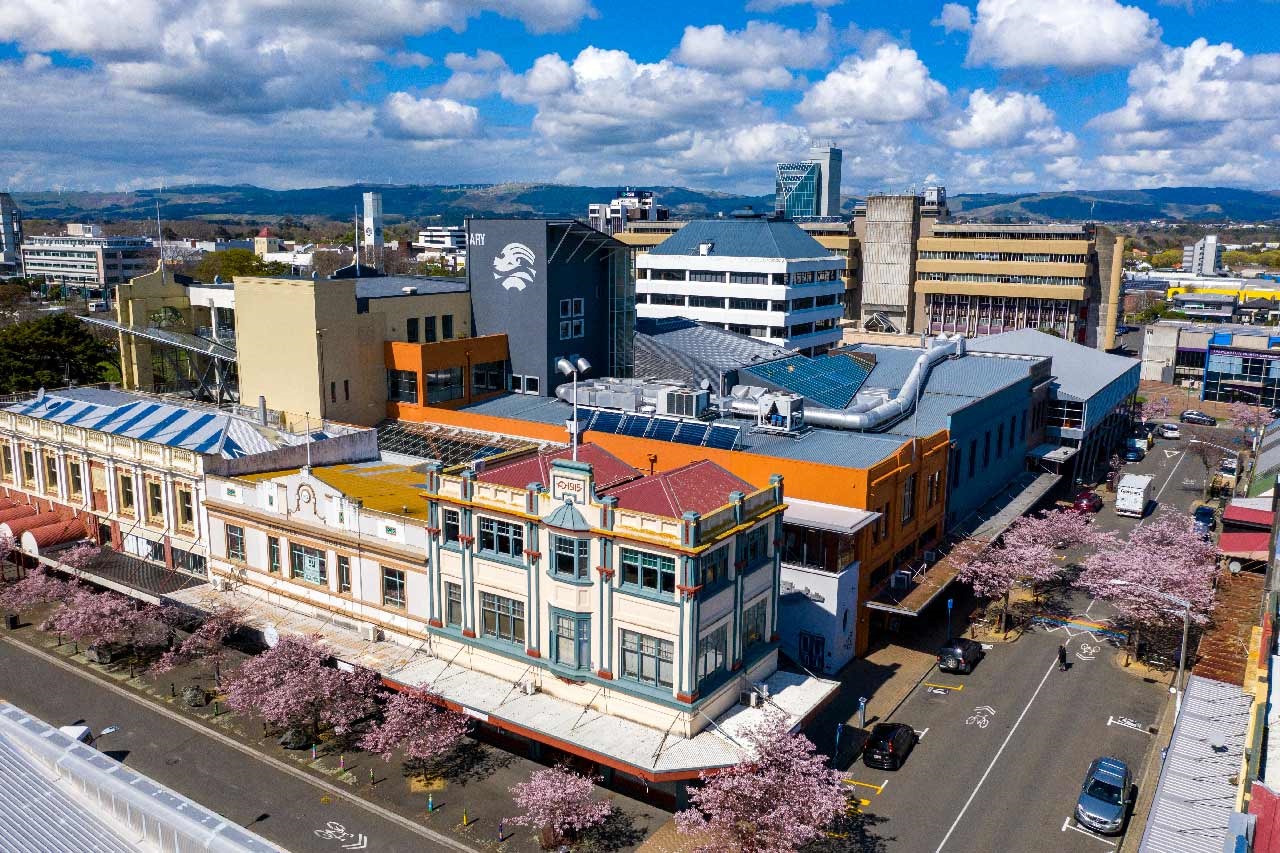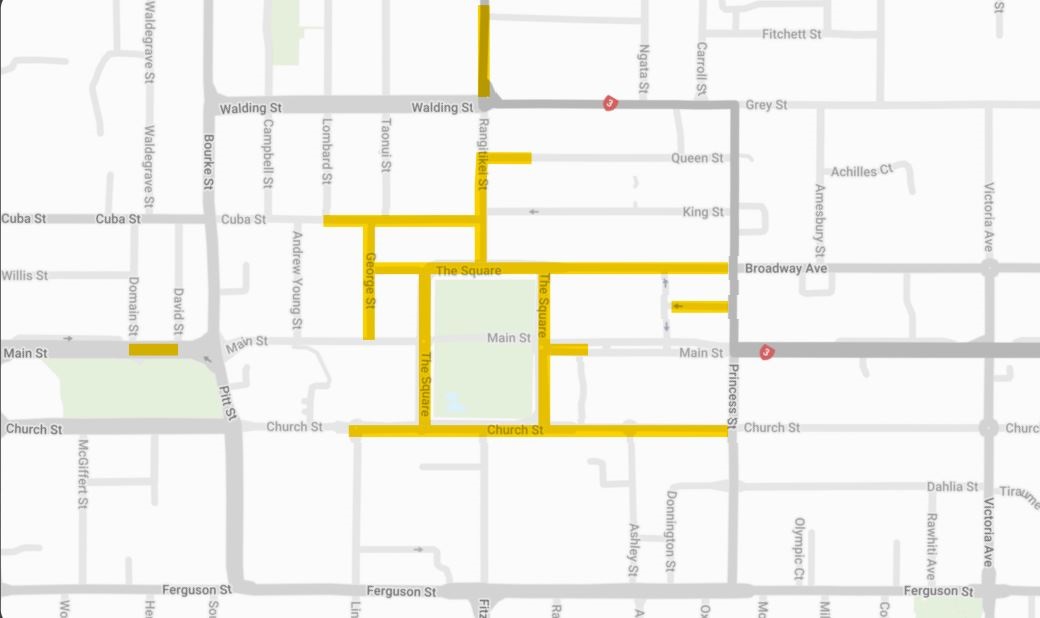Earthquake-prone buildings
Council is working with building owners, tenants and the community to upgrade earthquake-prone buildings, retain buildings with heritage value, and ensure the city centre remains commercially viable.

Information for building owners
If you own an earthquake-prone building, you will need to get an engineer to carry out an evaluation. This will give you a guide as to how strong the building is.
Most potential earthquake-prone buildings have already been identified and Council will have contacted you regarding this. If your building is considered earthquake prone by the engineer, you will need to provide a copy of the report to Council.
Once we receive the report, we’ll assess whether it meets the criteria as prescribed by legislation and determine if the building is earthquake prone. If it is, we will issue an earthquake-prone building notice.
If you don’t respond to Council’s initial identification of your building as potentially earthquake prone, or fail to provide an engineer’s report within the specified timeframe, we will treat the building as if it is earthquake prone and issue a notice.
If you wish to dispute the notice, you can do the following:
- Provide us with your own engineer’s report.
- Provide us with additional information about the factors that may affect the strength of the building.
- Seek determination of our decision from the Ministry of Business, Innovation and Employment (MBIE).
If you have any questions, please contact us. Email: earthquake.inquiries@pncc.govt.nz or phone: 06 356 8199
Remediation deadlines extended 4 years for non-lapsed buildings
The Building (Earthquake-prone Building Deadlines and Other Matters) Amendment Act came into effect on 26 November 2024, extending the remediation deadlines for earthquake-prone buildings by four years.
Buildings that have an earthquake-prone building (EPB) notice with a deadline on or after 2 April 2024 will have a 4-year extension to their notice expiry. There will an option for the Government to extend up to a further 2 years. This is to allow owners of earthquake-prone buildings additional time to remediate their buildings whilst the review takes place.
The extension does not apply to any EPB notices with an expiry on or prior to 1 April 2024.
The Earthquake-Prone Building Register has been updated to reflect this change.
Buying an earthquake-prone building
You can buy an earthquake-prone building but please be aware, as the new owner of the building, you will become responsible for the seismic strengthening that will be required.
We advise you to get an independent investigation done on the property before purchasing, so you are aware of any hidden costs or issues.
Renovating an earthquake-prone building
If you’re renovating your earthquake-prone building and the total cost of the building work is more than one-third of the building's capital value (since June 2006) you will also have to strengthen your building.
You will need to apply for resource consent and include in this the strengthening work you're doing, whether it's for the entire building or just the parts affected by the renovations. You'll also need to agree on a timeline to finish this strengthening work.
Strengthening a building can be expensive, especially fixing up the decor, so we suggest doing it while you're already renovating.
Changing the use of your building
When a building's use changes, the rules about seismically strengthening it are different. If the use changes, the building needs to be upgraded to meet the current Building Code safety standards.
Council owns some earthquake-prone buildings
We own several buildings which have been assessed as earthquake prone. These buildings are scattered across Palmy and, by law, need to be remedied by 2039.
These buildings have been assessed and aren’t deemed dangerous so they can continue to be used like they are now. We are working alongside the operators and tenants of each building to determine solutions and prioritise the order of work to be completed.
You’ll know if a building is earthquake-prone
By law, notices need to be put up and clearly visible at all main entrances of earthquake-prone buildings. They have the earthquake rating for the building and the date that strengthening or solution work must be completed by.
Classifying seismic and building risk
Commercial, publicly accessible, or multi-story residential buildings may be subject to the earthquake-prone building requirements.
The requirements are set out in the New Zealand Building Act 2004 and subsequent amendments. These include responsibilities for building owners and for Councils.
Lots of risk factors help predict what may happen to a building in an earthquake. These include its age, size, shape and construction materials. Structural engineering standards have changed over time. Older buildings do not have the same resilience in an earthquake.
An assessment carried out by a structural engineer grades each building to indicate its strength. This is shown as the percentage of the new building standard (NBS) it achieves. Earthquake-prone buildings are those classified as less than 34% of the current standard for an equivalent building.
Priority routes
Priority routes are busy roads or footpaths where falling masonry from buildings damaged in an earthquake would pose a high risk to life and public safety. The owners of identified buildings located on priority routes have a shorter timeframe to make their buildings safe: 7.5 years instead of 15 years.
The streets or parts of streets highlighted in the map have been identified as priority routes for Palmerston North. They are also listed below.

City centre streets:
- The Square
- Church Street between Linton Street and Princess Street
- Broadway Avenue between Rangitikei Street and Princess Street
- George Street
- Coleman Mall
- Cuba Street between Lombard Street and Rangitikei Street
- Rangitikei Street between The Square and Queen Street
- Berrymans Lane
- Regent Arcade
- Fitzherbert Avenue between The Square and 38 Fitzherbert Avenue
- Maple Lane
- Main Street between The Square and Maple Lane
- Queen Street from Rangitikei Street and 29 Queen Street
Locations outside the city centre:
- Rangitikei Street between Walding Street and 165 Rangitikei Street
- Broadway Avenue outside 262-264 Broadway Avenue
- Main Street (footpath and northern lane) between David Street and Domain Street